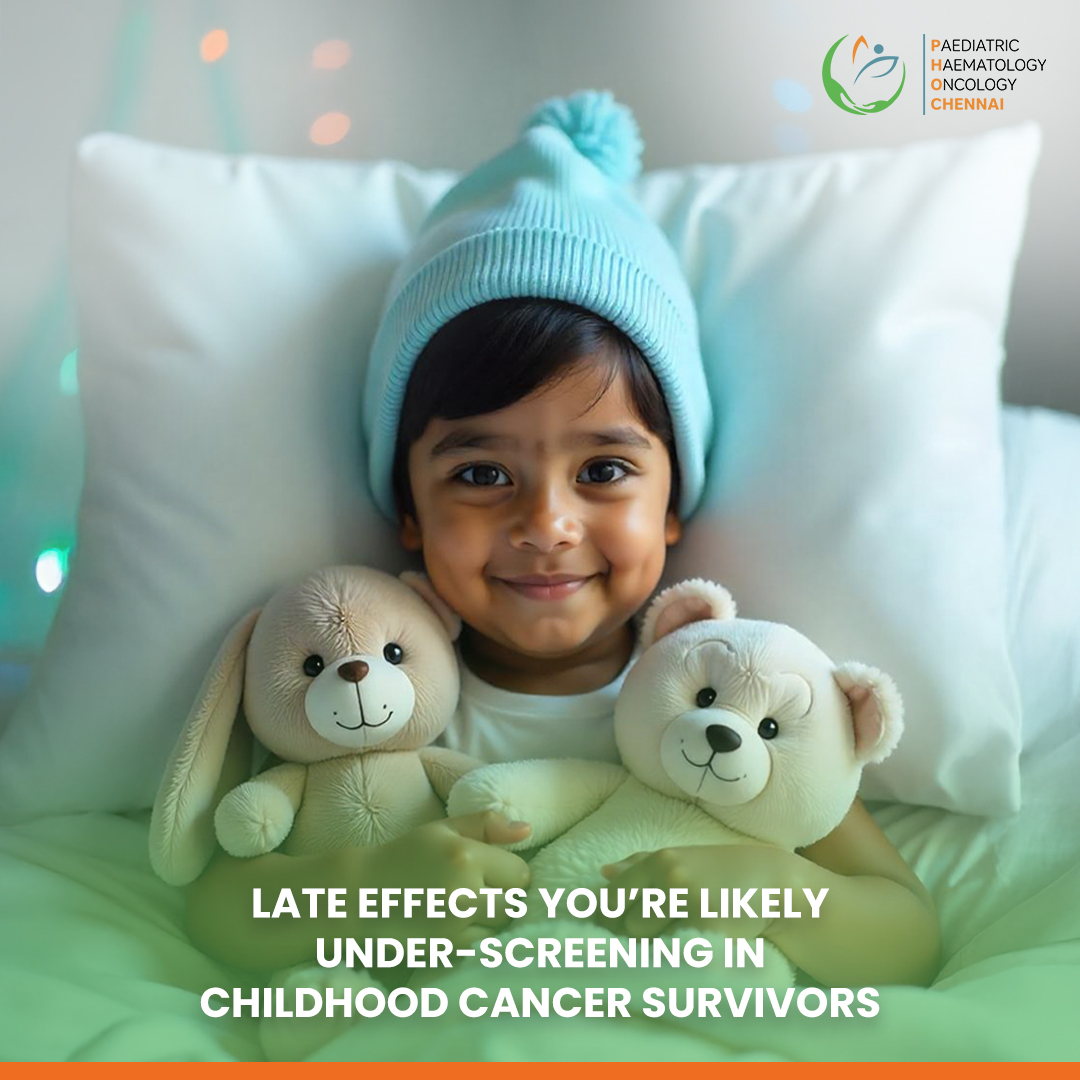Late Effects You’re Likely Under-Screening in Childhood Cancer Survivors
Survival rates for pediatric cancers have risen significantly over the past few decades, with 85% of children in high-income countries now surviving beyond five years post-diagnosis. However, survival often comes at a cost.
By adulthood, nearly two-thirds of childhood cancer survivors will develop at least one chronic health condition, and over one-third will develop severe or life-threatening late effects.
Despite these statistics, many late effects remain under-screened, especially in general pediatrics and community settings. Here are six critical late effects that are commonly missed, or detected too late, along with evidence-based recommendations for monitoring.
1. Cardiotoxicity
Subclinical left ventricular dysfunction or asymptomatic cardiomyopathy can occur in survivors exposed to anthracyclines or chest radiation. Anthracyclines (e.g., doxorubicin) have a well-established dose-dependent risk. A cumulative dose >250 mg/m² significantly increases long-term cardiotoxicity. Chest radiation doses >30 Gy also raise the risk of ischemic heart disease.
Many survivors do not receive ongoing echocardiographic surveillance beyond five years post-treatment, even though cardiac damage may not emerge until adulthood.
What to look for:
- History of anthracycline use or chest radiation
- Exercise intolerance, palpitations, or unexplained fatigue
- Decreased ejection fraction on echocardiogram or elevated cardiac biomarkers
Echocardiogram every 1–2 years is recommended for high-risk patients. Monitor for early symptoms and consider BNP or troponin testing in select cases.
2. Endocrinopathies
Growth hormone deficiency, hypothyroidism, early puberty, or gonadal failure may result from cranial radiation, total body irradiation (TBI), or alkylating agent exposure. Hypothyroidism occurs in 20–30% of patients treated with neck or cranial radiation. Gonadal dysfunction affects up to 80% of survivors treated with TBI or high-dose alkylating agents.
Many pediatric survivors are not followed longitudinally for thyroid, pituitary, or pubertal status, especially if they transition out of oncology care early.
What to look for:
- Short stature or decelerating growth
- Delayed or early puberty
- Fatigue, cold intolerance, or menstrual irregularity
Annual thyroid function tests are recommended for patients with cranial, spinal, or neck radiation. Monitor growth velocity and puberty staging annually. Use FSH, LH, estradiol/testosterone, and AMH when assessing fertility.
3. Neurocognitive Impairment
Executive dysfunction, memory deficits, and learning disabilities are seen in survivors of leukemia and CNS tumors, particularly those treated with cranial radiation or high-dose intrathecal methotrexate. Up to 60% of these survivors report long-term cognitive effects. These may manifest as academic struggles or behavioral issues.
Many schools and pediatricians attribute these issues to attention disorders or psychosocial stress without considering treatment-related cognitive injury.
What to look for:
- History of cranial radiation or CNS-directed chemotherapy
- Declining academic performance
- Inattention, poor memory, or processing speed issue
Neuropsychological testing at school entry, adolescence, and after significant treatment is essential. Educational interventions and cognitive rehab may be needed. Screen for coexisting mood and attention disorders.
4. Pulmonary Dysfunction
Subclinical restrictive or obstructive lung disease may develop in survivors treated with bleomycin, chest radiation, or hematopoietic stem cell transplantation. Bleomycin-induced fibrosis, radiation pneumonitis, and GVHD-related lung disease are potential causes of chronic respiratory symptoms.
Pulmonary function tests (PFTs) are often not repeated unless patients are symptomatic, despite the fact that early dysfunction may be silent.
What to look for:
- History of bleomycin, thoracic radiation, or transplant
- Chronic cough, wheezing, or exertional dyspnea
- Abnormal PFTs or imaging findings
Baseline and periodic PFTs are recommended for at-risk survivors. Encourage annual flu vaccination and assess functional capacity during visits. Chest CT may be warranted in select cases.
5. Secondary Malignancies
Second cancers such as thyroid, breast, or skin cancers are more common in survivors treated with radiation. The cumulative incidence of second malignant neoplasms at 30 years post-diagnosis is around 10–15%. Females exposed to chest radiation during adolescence are at especially high risk for breast cancer.
Mammography and MRI screening often begin too late. Dermatologic surveillance is also frequently overlooked.
What to look for:
- History of radiation (especially chest, neck, or cranial)
- Palpable masses, skin changes, or new lesions
- Family history of cancer syndromes
Annual breast MRI is recommended beginning at age 25 or 8 years after radiation, whichever is later. Perform yearly thyroid exams and ultrasound as needed. Encourage routine skin checks and sun protection practices.
6. Psychosocial Distress and PTSD
Anxiety, depression, post-traumatic stress, or social withdrawal may affect long-term survivors, even those considered physically well. Up to 25–30% of childhood cancer survivors meet criteria for a mental health disorder, though less than half receive treatment.
Mental health often receives limited attention outside of survivorship transitions or acute crises.
What to look for:
- Sleep disturbances, appetite changes, or withdrawal
- Poor school or peer functioning
- Emotional numbing, hypervigilance, or avoidance
Use validated tools such as PHQ-9, GAD-7, or PTSD screeners annually. Involve mental health professionals in survivorship care. Support families in understanding the potential for delayed emotional reactions.
Final Thoughts
Long-term survivors of childhood cancer are at risk for a range of late effects that are often under-screened, sometimes due to gaps in care transition, lack of awareness, or limited survivorship resources. These delayed complications can be silent until they are severe.
Are your pediatric cancer survivors receiving the full spectrum of late-effect screening? Revisit their treatment summaries, assess risk exposure, and make survivorship care plans a routine part of practice. Early detection saves lives, even after cancer is cured.






Comments